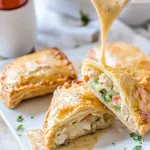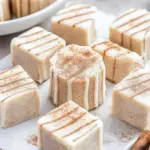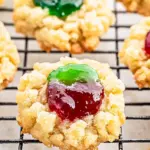Ebi Fry
(Japanese Fried Shrimp) is a beloved dish in Japanese cuisine that brings together the delicate sweetness of shrimp and the crispy, golden crunch of a perfectly fried coating. This dish is not only a favorite in Japanese homes but also in restaurants worldwide, often found on the menu as a popular appetizer, main dish, or part of a set meal.
The History and Cultural Significance of Ebi Fry
Ebi Fry, while distinctly Japanese, has its roots in Western culinary influence. It is part of a culinary movement in Japan called yoshoku, which refers to Western-style food adapted and incorporated into Japanese cuisine. This fusion came about during the Meiji era (1868–1912) when Japan began opening up to Western culture after centuries of isolation. Western cooking methods, including breading and frying, were introduced and quickly became popular.
The technique of frying shrimp was inspired by the Western dish of fried shrimp (often called shrimp tempura in Western restaurants), but Ebi Fry distinguishes itself with its use of panko breadcrumbs, which are lighter and crispier than the usual breading used in Western fried shrimp. Over time, this dish became a staple in Japanese cuisine and is commonly found in various formats, from bento lunch boxes to upscale restaurants.
Ebi Fry is often served with tonkatsu sauce, a sweet and tangy Japanese sauce that complements the fried shrimp with its deep umami flavor. It can also be enjoyed with a squeeze of fresh lemon or a dip in soy sauce, giving it a versatile profile that can be tailored to individual tastes.
The Art of Preparing Ebi Fry
The key to making perfect Ebi Fry is in the preparation and frying technique. The shrimp need to be fresh, peeled, and deveined, leaving the tail intact for presentation. While the batter typically consists of a simple flour mixture, it is the sparkling water that sets this dish apart. The carbonated bubbles in the sparkling water make the batter lighter and crispier, which results in a delicate, airy crust. This method of battering and frying is a hallmark of Japanese fried dishes.
The shrimp should be coated with panko breadcrumbs, which are larger and flakier than regular breadcrumbs. This gives Ebi Fry its signature texture light and crisp, rather than heavy or greasy. Panko breadcrumbs are made from white bread without crusts, and they absorb less oil, making the fried shrimp less greasy and maintaining a satisfying crunch. When fried correctly, the shrimp become golden brown and crunchy on the outside while staying tender and juicy on the inside.
One of the most important tips when making Ebi Fry is to make sure the oil is hot enough before frying. If the oil temperature is too low, the shrimp can absorb too much oil and become soggy. On the other hand, if the oil is too hot, the outside will burn before the shrimp is cooked through. A deep-frying thermometer can be helpful in maintaining the right temperature.
Variations and Customizations of Ebi Fry
While the classic Ebi Fry is delicious on its own, this dish lends itself to several variations and customizations. For instance, some people prefer a spicier batter by adding a bit of chili powder or paprika. Others may want to experiment with different coatings, such as coconut flakes or even crushed nuts, to give the shrimp a unique twist.
For those who want to make Ebi Fry more substantial, you can try stuffing the shrimp with a savory filling, such as cream cheese or spinach, before battering and frying. This can create a more complex flavor profile and offer a delightful surprise when you bite into the shrimp.
Additionally, while tonkatsu sauce is the most popular accompaniment, you could also serve Ebi Fry with other dipping sauces, such as sweet chili sauce, garlic butter, or lemon aioli, each adding a new dimension of flavor to the dish. The versatility of the dish also means it can be served as a side or appetizer, or paired with a light salad or steamed rice to create a complete meal.
For those interested in reducing their calorie intake, there are options to make a lighter version of Ebi Fry. Baking instead of frying is a popular alternative. Coating the shrimp with a light layer of breadcrumbs and baking them in the oven at a high temperature can still yield a crispy exterior, though the texture might differ slightly from the deep-fried version. Another alternative is to use air fryers, which have gained popularity in recent years for their ability to replicate the texture of deep frying with significantly less oil.
Ebi Fry as Part of a Traditional Japanese Meal
Ebi Fry is often served as part of a larger Japanese set meal or teishoku, where it is accompanied by rice, miso soup, and pickles. This type of meal allows for a balanced combination of flavors and textures, making it a well-rounded dining experience.
In many restaurants, Ebi Fry is served as a donburi or a rice bowl dish, where the crispy shrimp is placed on a bed of steamed rice and topped with sauce. This simple but delicious presentation allows the shrimp to be the star of the show, while the rice soaks up the savory flavors of the sauce.
Alternatively, it can be served as part of a bento box, which typically includes a variety of small dishes, such as rice, vegetables, and fish, along with a main protein like Ebi Fry. Bento boxes are especially popular in Japan for lunch, and they provide a balanced and convenient way to enjoy a variety of flavors.
Ebi Fry Around the World
While Ebi Fry originated in Japan, its popularity has spread far beyond the country’s borders. In many parts of the world, particularly in countries with large Japanese communities, this dish can be found at sushi bars, casual eateries, and high-end Japanese restaurants. In some places, Ebi Fry has been incorporated into fusion dishes, such as sushi rolls or sandwiches.
In the United States and other Western countries, Ebi Fry is often served as part of tempura platters or in sushi rolls. The dish’s crisp exterior and tender interior make it a delightful addition to many different types of cuisine. Ebi Fry has even been adapted into more contemporary dishes, such as Ebi Fry tacos or Ebi Fry sliders, where the shrimp is served in soft tortillas or on a bun with various toppings.
Conclusion:
Ebi Fry (Japanese Fried Shrimp) is a simple yet delicious dish that beautifully combines the delicate sweetness of shrimp with the satisfying crunch of a crispy, golden coating. Its origins in Western-influenced Japanese cuisine and its subsequent evolution into a beloved comfort food have made it a staple in many households and restaurants worldwide.
Whether you prefer the classic version with panko breadcrumbs or enjoy experimenting with different fillings and sauces, Ebi Fry is a dish that is both versatile and satisfying. The key to perfecting Ebi Fry lies in the technique: the right batter, a perfect panko coating, and frying at the correct oil temperature. Whether served as a side dish, appetizer, or main course, Ebi Fry adds a burst of flavor and texture to any meal.
With its rich history, customizable nature, and ability to be enjoyed in various forms, Ebi Fry continues to be a beloved dish around the world. Whether you’re making it at home or ordering it at a restaurant, this crispy fried shrimp is sure to bring joy to anyone who loves delicious, comforting food.






